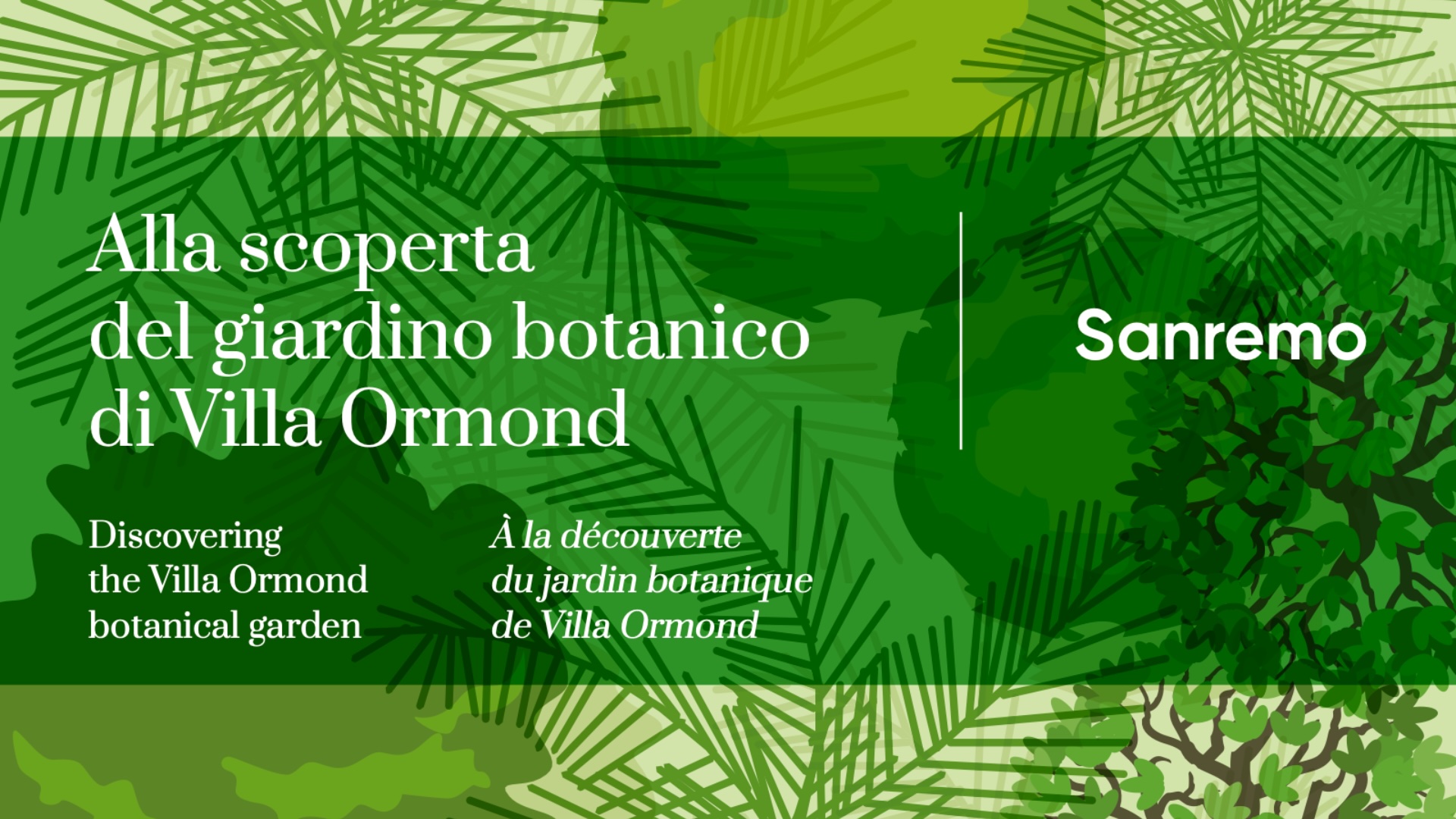The Gardens of Villa Ormond in Sanremo reach out toward the sea and are the midday setting for the lush park that for more than a century has graced the villa built at the behest of Michel Louis Ormond in the second half of the 19th century.
An elegant space, a place for meetings and rest, festive ceremonies and a setting for memories, a reflection of an era of artists, powerful men and travelers. Born from the enterprise of a French-Swiss family, today it is a public park and boasts the aesthetic taste of botanists, agronomists and landscape architects who planted collections of palms, trees and shrubs from every continent, here, in a skillful fusion of shapes and colors. A precious treasure chest of plant biodiversity, the Park is living testimony to distant lands that the sunshine and mild climate of the City of Flowers has welcomed for the pleasure of residents and guests alike.
The park of Villa Ormond is part of the progetto Jardival2 – Valorizzazione dei giardini della Riviera franco – italiana 2
Villa Ormond Park was created on the land of the Rambaldi property, which was once used for the cultivation of citrus and olive trees and where specimens of date palm trees also stood out. Their presence confirmed the Napoleonic cadastral designation of the place, which identified it as a palm grove. The property was acquired by the Ormond family in the second half of the 19th century.
Michel Louis Ormond (1828 -1901), a Swiss, owned an established tobacco business, which had enabled him to accumulate considerable wealth. His French wife, Marie Marguerite Renet aspired to live in a pleasant place where they could find relief for their health. Both chose Sanremo, already known at the time as a renowned seaside resort. The terrible earthquake of 1887 severely damaged the old residence. Louis decided to completely demolish the building, removed the old olive grove and entrusted the project of building a prestigious villa to Swiss architect Emile Réverdin. The villa, with porticoes and loggias, was completed in 1889, and the large Park that was crossed by the Via Aurelia and the railroad was transformed in a romantic key, privileging the privacy of the places and, as Ligurian poet Francesco Pastonchi said, “strolled the invisible Madame Ormond.” After Marie Marguerite’s death (1925), the villa and park were purchased by the municipality, at the time of Podesta Pietro Agosti.
In 1928 The park was made public, and a fountain was built inside, in the portion below Aurelia Street, designed by the podesta himself.
The garden today offers an extraordinary botanical exuberance, the result of successive plantings over time and boasting a multitude of acclimatized exotic plants from five continents. Prestigious is the Palmetum, which honors the history of Sanremo and the ancient connection with palm trees grown for Jewish and Christian religious communities as far back as the 14th century. The park houses a monument to Mexican journalist, man of letters, politician and historian Ignacio Manuel Altamirano, who lived the last years of his life in Sanremo. The monument to King Nikola I, father of Queen Helena of Savoy, also stands out among the garden’s palm trees.
The plants of Villa Ormond Park
The Villa Ormond Park in Sanremo is home to a remarkable plant biodiversity as a result of the farsighted landscaping and acclimatization work carried out over the past two centuries by talented botanists and curators who have succeeded one another. What we see today is, therefore, the result of numerous plantings of interesting exotic species that have adapted well to the local climate.
In the green spaces of the Park, 245 species, hybrids and horticultural varieties of exotic and, to a lesser extent, native plants have been surveyed. These plants belong to 66 different families of which the most represented – by species and varieties – are: Arecaceae (30), Asparagaceae (18), Rosaceae (14), Fabaceae (13); there are 173 genera represented.
Regarding the origin of these plants, we see that the distribution of areas of origin is as follows:
Africa: 30 species
Asia: 19
China, Japan: 28
Australia: 28
South America: 36
Mexico: 23
Autochthonous in Italy: 15
Horticultural hybrids: 10
Other areas: 15
List and description of plants:
- Phoenix dactylifera L.
- Chamaerops humilis L.
- Bougainvillea glabra Choisy
- Cedrus libani A. Rich.
- Wisteria sinensis Sweet
- Rosa banksiae W.T.Aiton
- Washingtonia filifera W.Wendl.
- Syagrus romanzoffiana Glassman
- Brahea armata S. Watson
- Magnoliaceae
- ARECACEAE Bercht. & J.Presl.
- Phoenix reclinata x canariensis Jacq.
- Butia capitata (Mart.) Becc.
- Araucariaceae Henkel & W.Hocst.
- Pinus pinea L
- Cupressus sempervirens L.
- Phoenix roebelenii O’Brien
- Cycadaceae Pers.
- Howea forsteriana Becc.
- Jubaea chilensis (Mart.) Becc.
- Phoenix reclinata Jacq.
- Cedrus atlantica var. Glauca Carriere
- Trachycarpus fortunei W.Wendl.
- Melia azedarech L.
- Jacaranda mimosifolia D.Don.
- Taxus baccata L.
- Strelitziaceae Hutch.
- Phoenix canariensis Chabaud
- Asparagaceae Juss.
- Washingtonia robusta W.Wendl.
- Asparagaceae Juss.
- Dracaena draco L.
- Nolina longifolia Hemsl.
- Phoenix theophrasti Greuter
- Erythrina crista-galli L.

